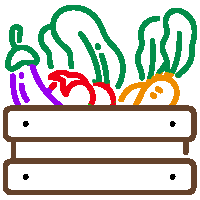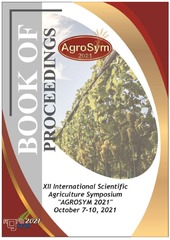Приказ основних података о документу
Interaction of fertilization and soybean genotype on number of pods, weight of 1000 grains and grain yield
| dc.creator | Cvijanović, Gorica | |
| dc.creator | Đukić, Vojin | |
| dc.creator | Bajagić, Marija | |
| dc.creator | Đurić, Nenad | |
| dc.creator | Dozet, Gordana | |
| dc.creator | Sekulić, Jovana | |
| dc.creator | Bojat, Nenad | |
| dc.date.accessioned | 2021-11-23T17:28:52Z | |
| dc.date.available | 2022-11-23 | |
| dc.date.issued | 2021 | |
| dc.identifier.isbn | 978-99976-787-9-9 | |
| dc.identifier.uri | http://RIVeC.institut-palanka.rs/handle/123456789/407 | |
| dc.description.abstract | In the last few decades, new soybean varieties with different characteristics, grain quality and purpose have been created, contributing to its expansion and increase in the cultivation area. Thanks to good agronomic characteristics, soybean has found its place in sustainable production systems. In order to increase the yield and quality of grain in sustainable soybean growing systems, different foliar treatments with different active substances have been increasingly applied. The aim of the study was to determine the impact of the application of EM Aktiv with effective microorganisms on the number of pods per plant, weight of 1000 grains and grain yield of different soybean cultivars grown in an integrated cultivation system. The research was conducted in the period 2016-2019 in the experimental field of the Institute of Field and Vegetable Crops Novi Sad. Varieties from three maturing groups Galina (0 group), Sava (I group) and Rubin (II group) were grown. Variants of fertilization application were: T1 control, T2 EM Aktiv was applied to the soil before sowing 20 l.ha-1, and later in vegetation 6 l.ha-1 (the first foliar treatment in the phase of three to four trefoils and the second before flowering in the budding phase), T3 NPK 8:15:15 300 kg.ha-1 in basic treatment and T4 combination of T2 and T3 treatments. On average for all three years of the study were found statistically significant differences between the variables in all properties. The highest values were determined when applying T4 treatment. The number of pods was 55.92, the weight of 1000 grains was 163.61 g and the yield was 4.240 kg.ha-1. The cultivar Rubin (II maturing group) showed the highest values for all examined variables on average after all treatments. | sr |
| dc.language.iso | en | sr |
| dc.publisher | East Sarajevo : Faculty of Agriculture | sr |
| dc.relation | info:eu-repo/grantAgreement/MESTD/inst-2020/200378/RS// | sr |
| dc.relation | info:eu-repo/grantAgreement/MESTD/inst-2020/200032/RS// | sr |
| dc.relation | info:eu-repo/grantAgreement/MESTD/Technological Development (TD or TR)/31092/RS// | sr |
| dc.rights | openAccess | sr |
| dc.source | Book of Proceedings XII International Scientific Agriculture Symposium "AGROSYM 2021", Jahorina, October 07 - 10 | sr |
| dc.subject | soybean | sr |
| dc.subject | fertilization | sr |
| dc.subject | effective microorganisms | sr |
| dc.subject | yield | sr |
| dc.title | Interaction of fertilization and soybean genotype on number of pods, weight of 1000 grains and grain yield | sr |
| dc.type | conferenceObject | sr |
| dc.rights.license | ARR | sr |
| dc.citation.epage | 393 | |
| dc.citation.spage | 388 | |
| dc.identifier.fulltext | http://RIVeC.institut-palanka.rs/bitstream/id/1095/bitstream_1095.pdf | |
| dc.identifier.rcub | https://hdl.handle.net/21.15107/rcub_rivec_407 | |
| dc.type.version | publishedVersion | sr |


